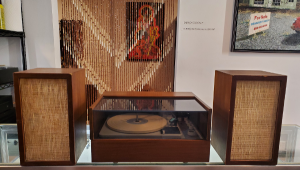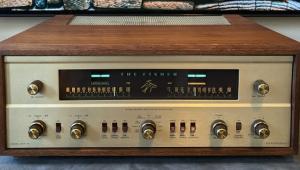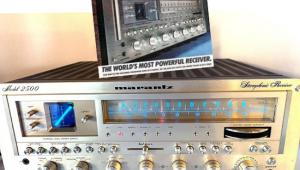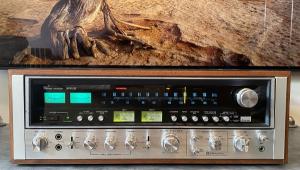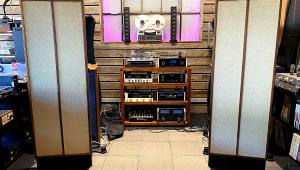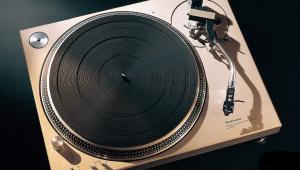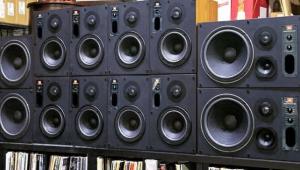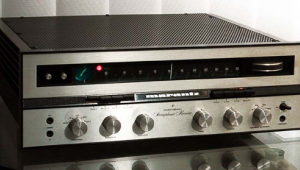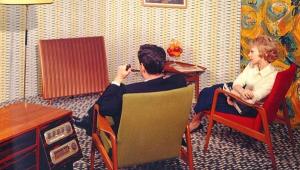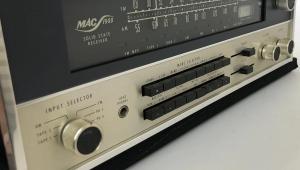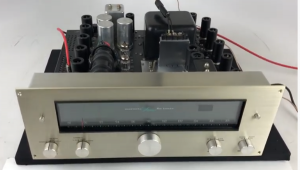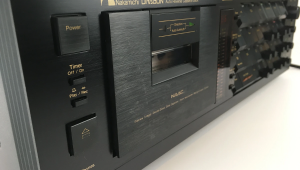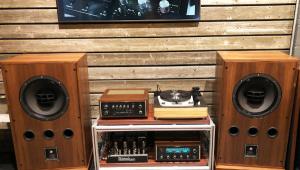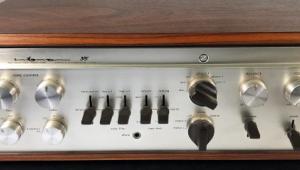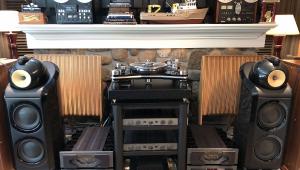After Dating for the last 3 years, I'm still head over heels with my Pro 141FD. Don't plan on kicking her out of bed any time soon. Kuro don't talk back,she never disagree's and is always turned on!
Purrrrrrrrrrrrr...
Pioneer Kuro Plasma HDTV

I spoke with Josh Kairoff, then Pioneer USA’s director of display engineering, to learn more about what made the Kuro so special. First things first, “Kuro” means “black” in Japanese, and the display’s inky blacks—the blackest blacks—were unmatched in the industry. The deeper blacks also yielded superior shadow detail and resolution. While most manufacturers were hell-bent on making the brightest possible displays, Pioneer took the opposite path with Kuro. Originally conceived as a broadcast monitor, Kairoff thinks the Kuro’s image quality was on par with Sony’s $25k professional monitors. The Kuro line was initiated by Pioneer USA, not in Japan, and the Kuro engineering team was drawn from Pioneer’s professional division.
What really made the Kuro different was that the optical filter was directly bonded to the plasma elements instead of the display’s glass, which is the way every other plasma display was made. Kairoff describes the design approach as “akin to putting Carl Zeiss lenses on your camera.” That design innovation required additional engineering time to perfect, which made the Kuro more expensive to manufacture than other plasmas. The engineers were unable to devise cost saving measures that wouldn’t compromise performance. Pioneer’s exit from the TV market wasn’t the end of the Kuro. Panasonic purchased most of the associated patents and technology and lured a significant segment of the Kuro engineering staff.
- Log in or register to post comments


One of the greats - yes, but the verdict on best ever remains undecided at least until Panasonic ZT series arrives. Kuro may be a distant thought once 4K OLED gets a foothold. My two cents...

It is amazing that no product yet seems to have surpassed the Kuro in image quality. I find myself hard pressed to identify another three year old tech product that can still perform better than the latest and greatest new versions on the market today.
The Kuro line will eventually cede its crown to someone. OLED should be the technology to do it, since it too is a self-illuminating design. It will still be a while longer until that is in the somewhat affordable mainstream market, so the Kuros have a while longer to reign.
I bought my Pro 111FD after Pioneer exited the market. I had been on the fence, but knew that it was time to jump on it. I have not regretted it one bit. I still haven't seen a new set at a friend's house that can compete with it. They may be larger, but the picture is incomparable.
When I finally do replace this set, I imagine it will be a 4K OLED set in a larger size. Maybe in 3 or 4 years the price and performance lines will intersect at a reasonable point. Then there is that bugbear of native 4K content...

How can this ever be classified as "vintage" ! Kuro is to flat panel what trinitron was to cathode ray. I picked up my first Kuro by chance after they left the market. So enthralled by the picture I aquired 2 more locally (Australia) and went to the trouble of importing 2 more (600m and 141fd) from your wonderful country. If you see one listed for sale, do yourself a huge favour and grab it ! The picture quality draws you in like no other. It really is that good.

Mr. Guttenberg may have forgotten about a reference caliber vintage CRT TV - The mighty 196lb Sony KD-34XBR960 - Definitely one of best tubes ever made. Black levels on a properly calibrated set are on par with Kuro. It was a 1080i set, but what a picture during its time. The TV's picture quality had reviewers salivating - even on standard definition sources. Its audio quality will blow any Pioneer Kuro panel out of the water.

As an Elite authorized dealer I attended Pioneer dealer meetings and in 2007 I stayed in Josh's dealer training class all day for his 141FD instruction. Josh is a great video engineer and developed much of the 141FD technologies.
Great times!
-Robert

Mr. Harrison - the majority of my comments were about picture quality. Only my last comment was about audio. It remains my opinion that the audio quality is better than many flat panels today or in the past.
As for the XBR 960's picture quality, I would encourage you to do a little research. In fact, Home Theater Magazine can assist you in this endeavor. Below is a reference to another Home Theater Mag link.
http://www.hometheater.com/content/sony-kd-34xbr960-crt-tv
The above was posted on June 14, 2011, by none other than Scott Wilkinson, audio/video guru and former HomeTheatermag online editor and reviewer now over Secrets of Home Theater and High Fidelity.
Properly calibrated, the XBR960 will equal a Kuro Black Level - that is an undisputed fact. Is the Kuro a better monitor? In absolute holistic terms - Yes. Its benefits and advantages are numerous. Remember CRTs were limited in screen size due to weight concerns. Brightness could be problematic and they had to be routinely calibrated.
Your comments about the XBR960 looking like standard definition are quite dubious and likely not an opinion shared by professional reviewers. Though the XBR 960 is not 1080P capable, I am sure the editors and contributors of HT Mag including Rob Sabin and Tom Norton would agree that 1080i is not standard definition and that the Sony KD-34XBR960 was a respectable television in its day.

Ok, if we want to talk about Trinitrons and vintage, I'm gonna throw my hat in for the 1996 KV-32XBR100. That *WAS* a broadcast studio monitor repackaged for the home market as a "Super Trinitron". I tried to salvage one that was perfect a few years ago but unfortunately Sony used plastics that became brittle on the case and it was unsafe to keep it around as it was literally disintegrating.
It may not have been high-def, but the picture was absolutely spectacular. It carried an MSRP of 3200.00 in its day which I believe was even higher or on par with the 960 later on.
